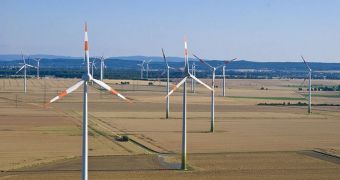Investigators in Austria are currently working on a new method of estimating the amount of electricity that wind farms will generate given a specified area and a type of wind patterns.
The researchers are looking at several prediction methods, comparing them against each other and with real-life production numbers, in a bid to see which is the most efficient at what it does.
The Austrian Science Fund FWF, the main funder of the new research, wants to develop optimized approaches to estimating the amount of renewable power that authorities will be able to rely on in the near future.
In the European Union, pressures are high to reduce greenhouse gas emissions, and this can be done by constructing more wind farms and solar panels, as well as by exploiting the energy of the sea, and that of the Earth's interior.
With better estimates of power output in hand, experts can then develop approaches to ensuring that the needs of the general population are met in the most environmentally-safe way possible.
The forecasts the research group is trying to create are designed to cover periods of time ranging from six hours to then days, PhysOrg reports.
Factors that scientists need to take into account include reliability, as well as temporal and spatial resolution. All of the methods being analyzed at this point will be compared to each other in all these regards, as well as in many others.
While producing renewable energy is a great way of preventing extensive damage to the planet's atmosphere, it is also a highly-unreliable process.
Of all alternative methods of producing energy, only hydroelectric power can be managed successfully. But wind farms and solar power plants are highly-dependent on natural variation over very short time spans.
If the Sun is covered by clouds, the output of the power planet drops consistently. Similarly, wind farms begin to produce a lot more electricity if a storm hits their area.
The Austrian research team hopes that, by conducting this study, they will be able to develop a method of boosting both the amount of energy derived from wind farms, as well as the overall efficiency of the power grid.
“Put simply, we test all methods to see how well they can establish the connection between two data sets,” says professor Georg Mayr.
“Weather forecasting data and data from several Austrian wind parks, which indicate the real output level under different wind conditions,” adds the expert, who is the head of the research team.
The group is based at the Institute of Meteorology and Geophysics.“The forecasting method which, based on data from the past, can calculate the real energy generation most accurately, is likely the best method for predicting future output,” he concludes.

 14 DAY TRIAL //
14 DAY TRIAL //